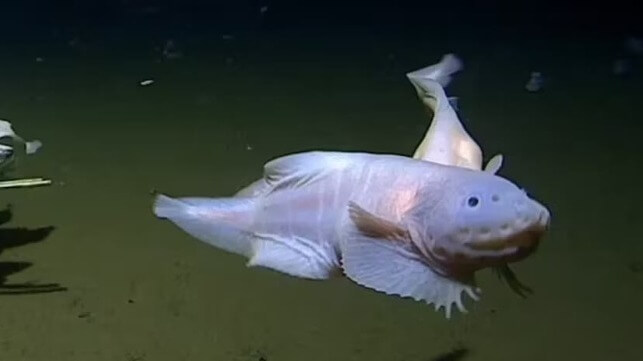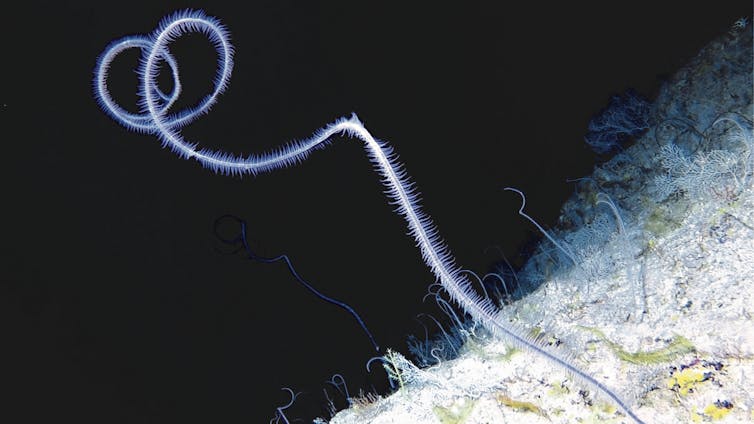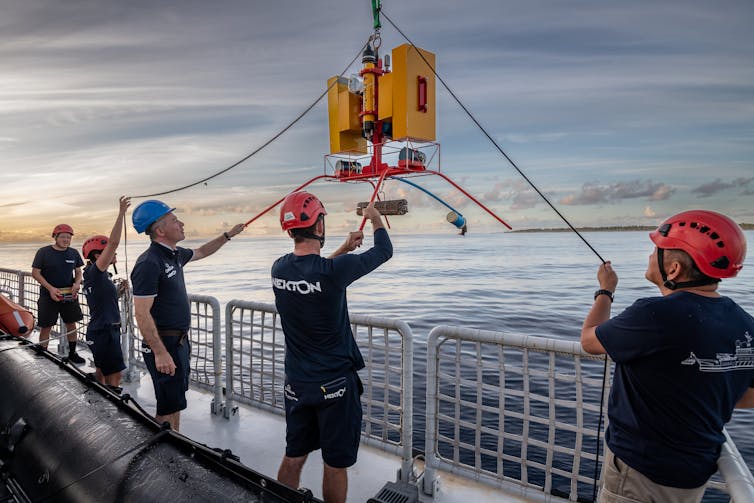The "Impossible" Fish That Broke Two Deep Sea Records

When thinking of animals that live in the most extreme environments on Earth most of us probably don’t think of the snailfish. Its name may not hint at extraordinary physical capabilities but the snailfish has broken the record for living at the deepest ocean depths known to humanity.
In fact scientists believed it was physiologically impossible for fish to survive conditions below 8,200 meters. Until recently, when Australian and Japanese researchers found one at a record-shattering 8,336 meters in the Izu-Ogasawara Trench, south of Japan. That’s 158 meters deeper than the previous record, also set by a snailfish during an encounter in 2017 in the Marianas Trench, about 2,000 kilometers east of the Philippines.
The deep ocean has yet again shown us there is still much to be discovered if we only have the willingness to look.
Defined as waters below 200 meters, this environment makes up 50 percent of Earth’s surface. Researchers estimate that only 10-28 percent of marine life is currently known, and most knowledge stems from researchers based in Europe, the US and Japan.
Scientists believe a lack of understanding of ocean life and its distribution is one of the biggest barriers to restoring marine biodiversity damaged by overfishing, pollution and climate change.
But when we do explore the deep ocean, we are often rewarded with new discoveries.
My current research focuses on the relatively shallow parts of the ocean from 0-500 meters. Even in relatively well-researched areas such as Bermuda, discoveries can still be made. In one oceanographic expedition, the international team I was part of discovered vast expanses of black wire coral gardens, the deepest record of the invasive lionfish, and several new species of red algae.

Black coral gardens in Bermuda. Nekton Foundation, Author provided
It’s common for up to 50 percent of all species (and sometimes almost 95 percent) sampled on a single deep-ocean expedition to be new to science. New habitat discoveries are also common. In March 2023 scientists on an expedition to the Mid-Atlantic ridge for the Schmidt Ocean Institute discovered numerous new hydrothermal vents also known as black smokers (like geysers, or hot springs, on the ocean floor).
Why deep ocean discoveries matter
Research suggests hydrothermal vents may have played a key role in the origin of life on our planet. So any new information about these unique ecosystems and their inhabitants has implications for humanity as well as extraterrestrial life.
Hydrothermal vents also show the astonishing adaptability of life. In 2012, scientists discovered new species of crabs in the Southern Ocean, the hairy-chested Hoff crabs. Named after their resemblance to the Baywatch actor David Hasselhoff, they construct crab cities around black smokers. There can be more than 700 crabs per square metre. The fur on their chest incubates microbes that can convert toxic chemicals that come out of scorching black smokers into energy. The crabs use special comb-like mouthparts to remove the energy-rich bacteria from their fur to eat. It is their main source of nourishment.
Apart from the excitement and wonder that comes with it, these discoveries provide new information that benefits society. Studies have found this habitat could harbour treatments for human diseases. Recently, researchers studied fungi found in cold-water animals called sea pens in the northeast Atlantic and discovered they produce compounds that show promise as potential drug treatments for chronic musculoskeletal diseases such as osteoarthritis.
Similarly, studies show bacteria living in deep-water sponges may have both antibiotic and antitumour properties.
The potential of bioprospecting – studying wildlife and plantlife for valuable new resources – has barely been explored in the case of deep ocean. But the industry is rapidly growing and already worth billions of dollars. Countries agreed to share the benefits as part of the UN high seas treaty in March 2023. But the new international law has not yet been ratified and it is too soon to tell whether developed nations will stick to their pledge to share the ocean’s resources with all member states.
Where do we go next?
Very little of the deep ocean has been systematically explored so far due to financial and logistical constraints. Remotely-operated vehicles cost from US$15,000 (£12,100) to millions of dollars, while a submarine built for deep ocean exploration can cost almost US$50 million. In addition, offshore exploration requires large research vessels to be deployed for weeks at sea which involves months of planning and logistics.

Landers being deployed on a deep ocean survey in the Maldives. Nekton Foundation, Author provided
The recent snailfish discovery was made during an international expedition involving Australian and Japanese researchers who set out to explore life in the trenches off Japan. For that study, the team used landers, metal cages that land on the seafloor using ballast weights. Landers are equipped with cameras, lights and bait for attracting predators. While it is possible to explore even the greatest ocean depths with submarines, landers are easier to operate, and can stay underwater for longer.
We are losing deep sea life before we can even discover it. Overfishing, noise pollution and global warming are already destroying deep ocean ecosystems and their inhabitants. Commercial deep seabed mining for minerals has not yet been carried out but it is a looming threat.
Governments allocate on average only 1.7 percent of their annual research budgets to explore beneath the ocean surface. If scientists make new discoveries with almost every study of the deep ocean, imagine what we could achieve if governments, charities and marine scientists worked more closely together and had better funding.
Paris Stefanoudis is a senior postdoctoral researcher at University of Oxford.
This article appears courtesy of The Conversation and may be found in its original form here.

The opinions expressed herein are the author's and not necessarily those of The Maritime Executive.
